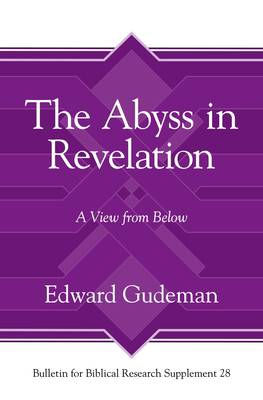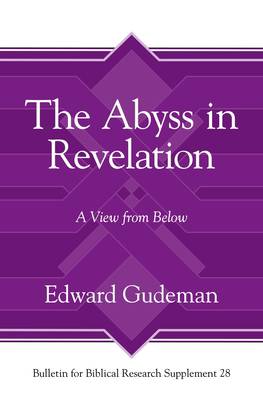
- Retrait gratuit dans votre magasin Club
- 7.000.000 titres dans notre catalogue
- Payer en toute sécurité
- Toujours un magasin près de chez vous
- Retrait gratuit dans votre magasin Club
- 7.000.000 titres dans notre catalogue
- Payer en toute sécurité
- Toujours un magasin près de chez vous
Description
It is generally accepted that Revelation's heavenly scenes were intended to demonstrate that God continued to exercise his control even when the audience's experience might suggest otherwise. In The Abyss in Revelation, Edward Gudemanargues that even though the scenes of the underworld and its inhabitants are describing reality from the opposite perspective, they declare God's sovereignty and power in an equally powerful way.
Examining the motif and imagery of the abyss and the sea in Old Testament, New Testament, Greco-Roman, and Second Temple Jewish writings, Gudeman identifies traditions that John appropriates in Revelation in order to create his unique vision of the abyss. Gudeman shows that the abyss and related concepts in Revelation are variously envisioned as the abode of evil creatures, the place from which they exit, and a prison that holds them captive. In all of this, John consistently demonstrates that God is in control of the activity of Satan and demonic beings and that their destruction is both planned and certain.
Original and convincing, this volume sheds light on Revelation's message about how God responds to evil and advances our understanding of several interpretive problems related to the abyss and its inhabitants. Biblical scholars especially will benefit from Gudeman's research.
Spécifications
Parties prenantes
- Auteur(s) :
- Editeur:
Contenu
- Nombre de pages :
- 192
- Langue:
- Anglais
- Collection :
- Tome:
- n° 28
Caractéristiques
- EAN:
- 9781646021338
- Date de parution :
- 07-09-21
- Format:
- Livre relié
- Format numérique:
- Genaaid
- Dimensions :
- 152 mm x 231 mm
- Poids :
- 204 g







